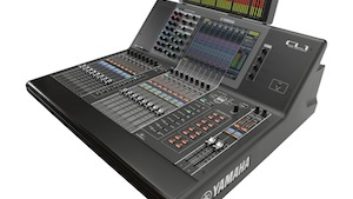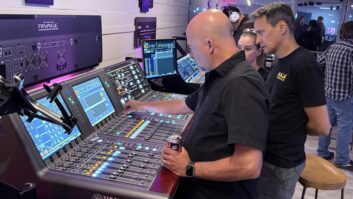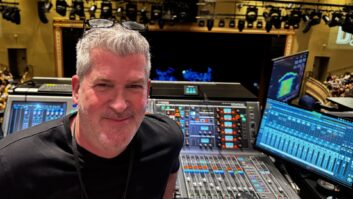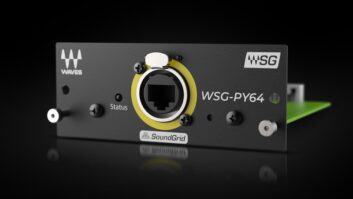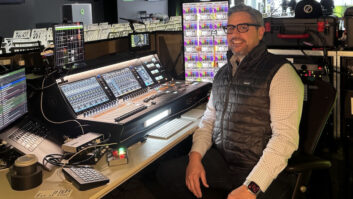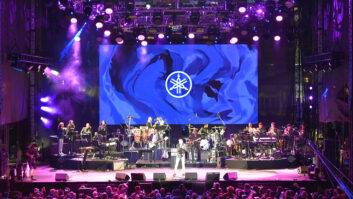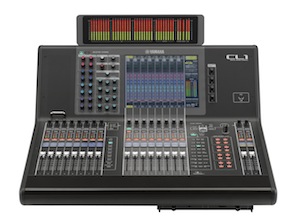
I had two shows booked in to mix FOH and record a new UK soul singer.
The venue’s console wasn’t going to cut it for me to mix the band, set up monitor mixes and multi-track both shows. A few weeks earlier, I’d been invited to visit Yamaha headquarters in Milton Keynes to test drive the CL Series.
I felt right at home within minutes. The CL has the functionality of the LS9 and the workflow, layout and big-boy attitude of the M7CL, all poured into a slick and ergonomic desk. I immediately spec’d it for my upcoming shows.
On show day, I had the console and a Rio1608-D I/O rack to rig. With the CL, there’s nothing more straightforward. One Cat5e (or Cat6) cable is all it takes, and all your ins and outs have been plumbed into the console. All I had to do was take the XLRs from the house multicore, feed them into the Rio, Ethernet the Rio into the console, and voilà! We got sound.
When it came to the recording part, once again, things couldn’t have been simpler. This is where the Dante-enabled functionality comes into play. I have Dante Virtual Soundcard (DVS) installed on the laptop, and all I had to do was take another Ethernet feed from the CL’s secondary port into the computer’s Ethernet port. With DVS enabled, I dove into Audinate’s Dante Controller, assigned the CL’s outputs to my Mac’s inputs, and I had all my channels show up in Logic, ready to record—16 channels, one cable!
Rigging this system was fast, giving me loads of spare time to focus on miking up the band, ringing out the P.A. and making sure all monitor feeds were clean and good to go.
The band lineup was pretty standard, with kit (kick, snare, hats, rack, floor, extra snare, overheads), bass D.I., two mono keys, guitar, acoustic D.I. and lead vocals. Soundcheck went smoothly, starting with the kit and bass, guitars and keys to follow, and finishing up with the vocal.
Although I’m a huge analog console fan for live work, I found the CL to be really fast. All the important functions like gain, phantom power, phase and EQ are right on the center section of the desk. Simply select the channel you’re working on, and all the functions default to that channel.
There’s also access to numerous auxes, buses and DCAs, and the CL comes loaded with some killer effects. In addition to its regular dynamics section, a range of premium-rack plug-ins is also included. The Portico series compressor and EQ sound amazing, and having the UA emulations onboard is a nice sonic bonus, indeed.
Setting up the levels, EQ, dynamics and monitor feeds was a piece of cake. Because you have graphic EQ racks across any output you want, you can fine-tune FOH and all of the monitor sends in great detail without the need for large outboard racks.
Once I’d started bringing up the faders to build the FOH balance, I noticed how big a leap Yamaha’s mic pre design had made. The new pre’s sound so much bigger and warmer than what I’d been used to on analog and digital Yamaha consoles.
The CL is a fabulously versatile console that takes no time to rig, sounds great and allows you to recall your mixes instantly. That recall function was extremely useful when I walked into the venue a week later. I got the console out of the flight case, connected all the cabling, plugged in my USB stick and loaded my settings. Within 15 minutes I was up and running—an FOH engineer’s dream.
Wes Maebe is a UK-based recording, mixing, mastering and live-sound engineer. Check out his work at www.wesonator.co.uk.
For a full review of the CL1, click here.
